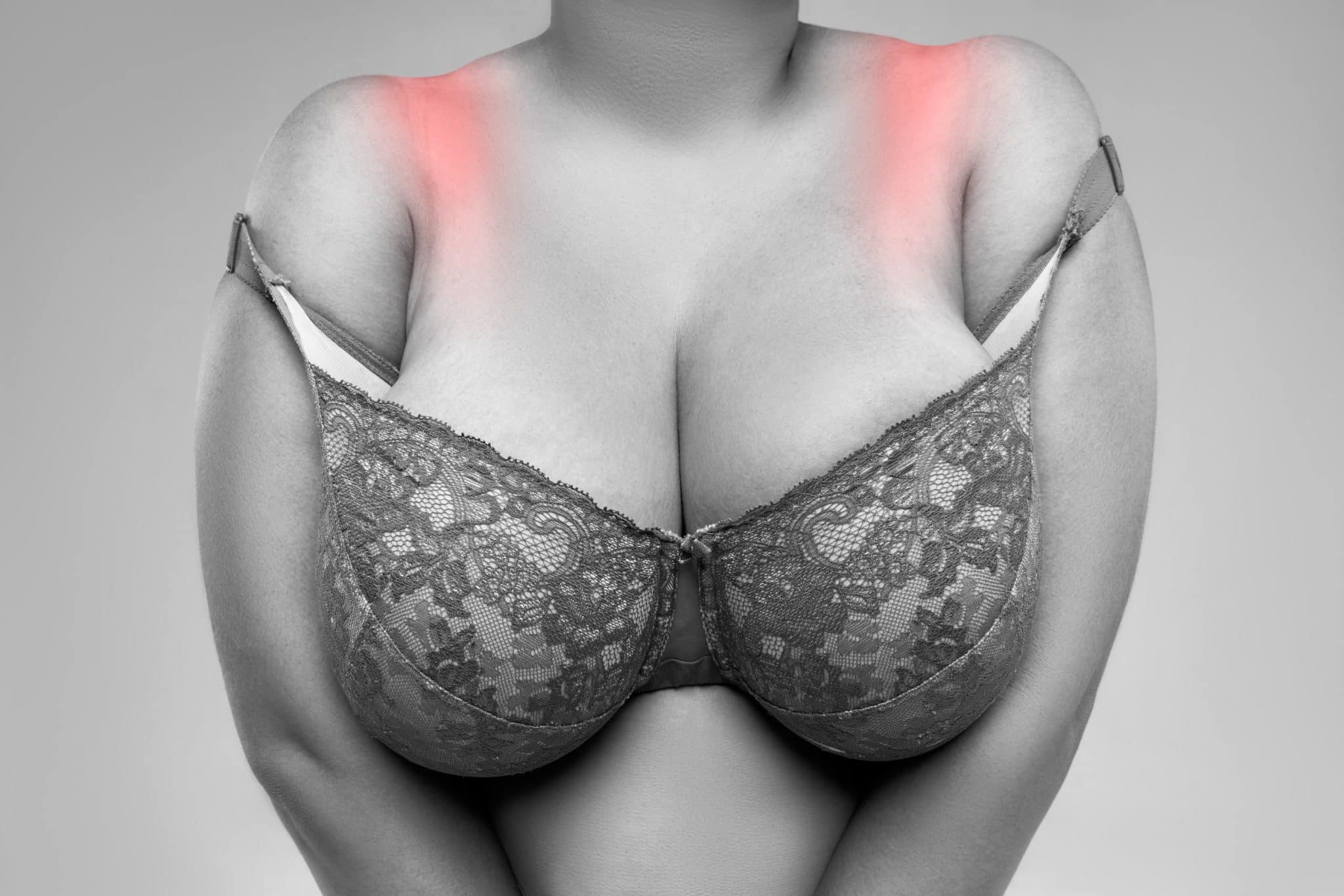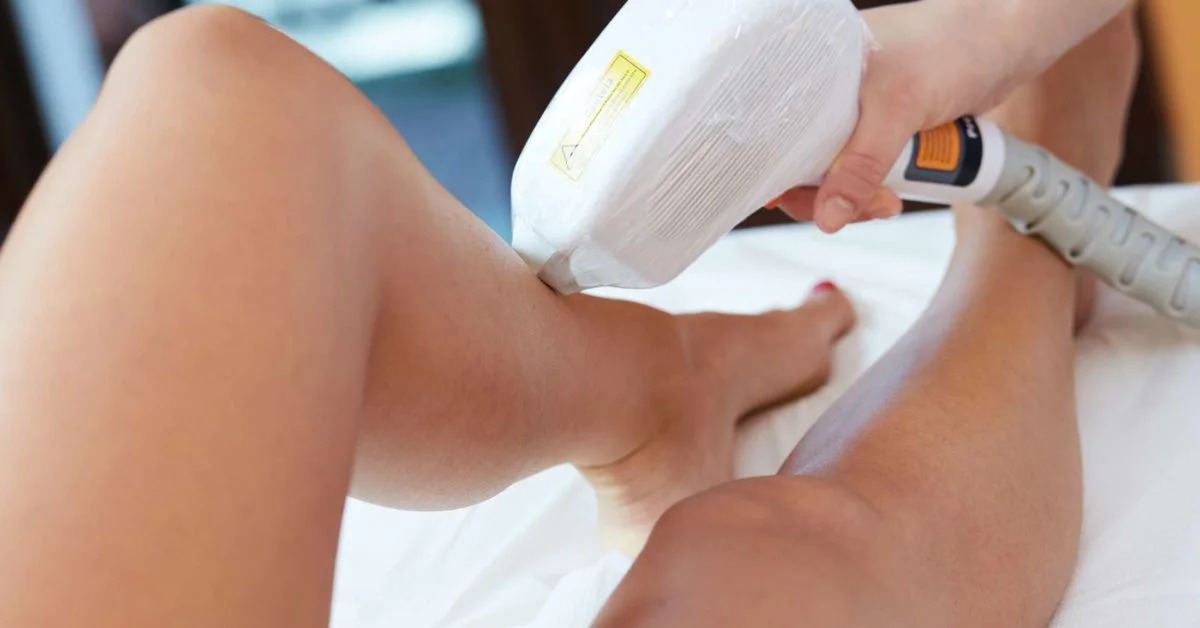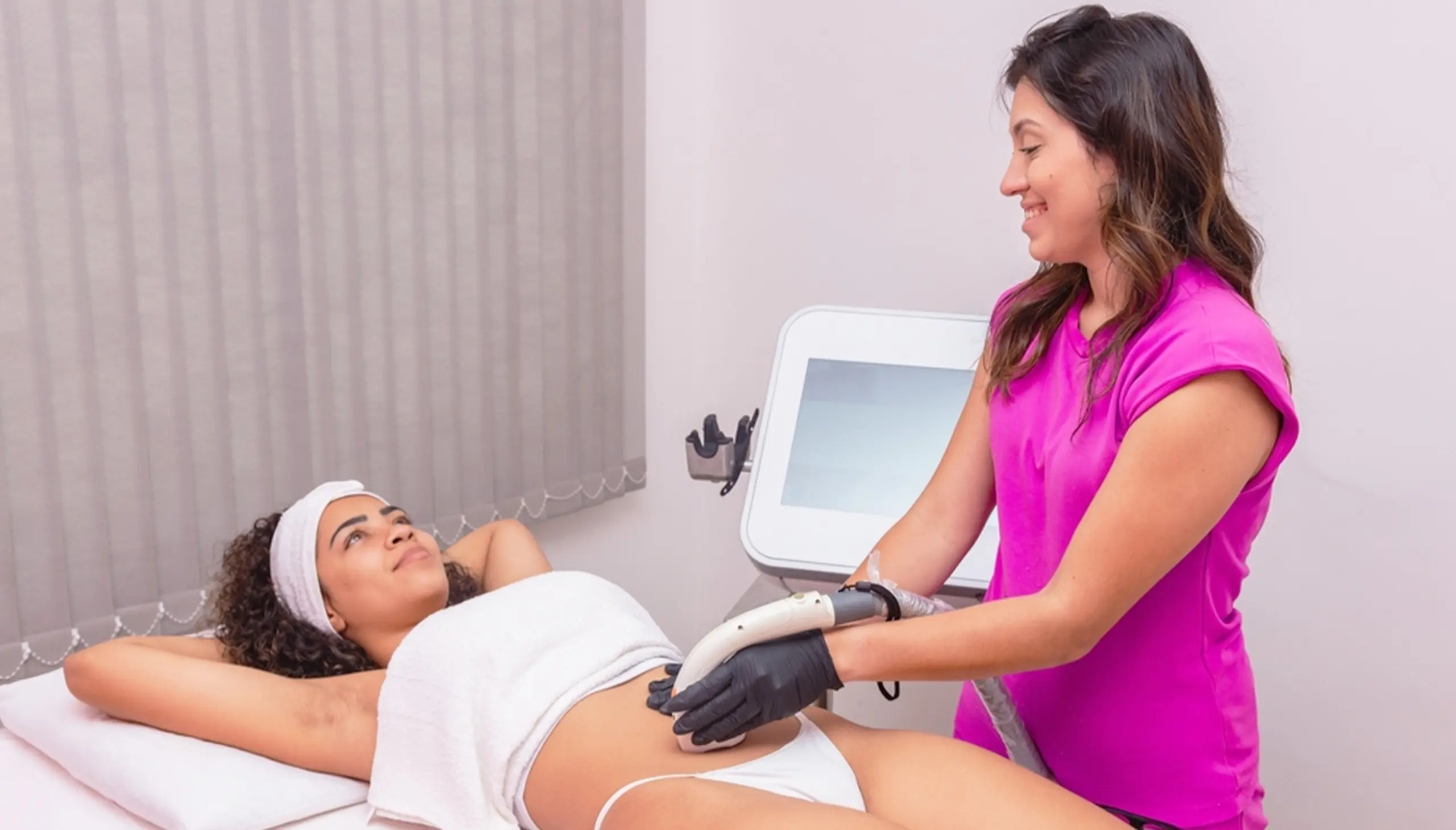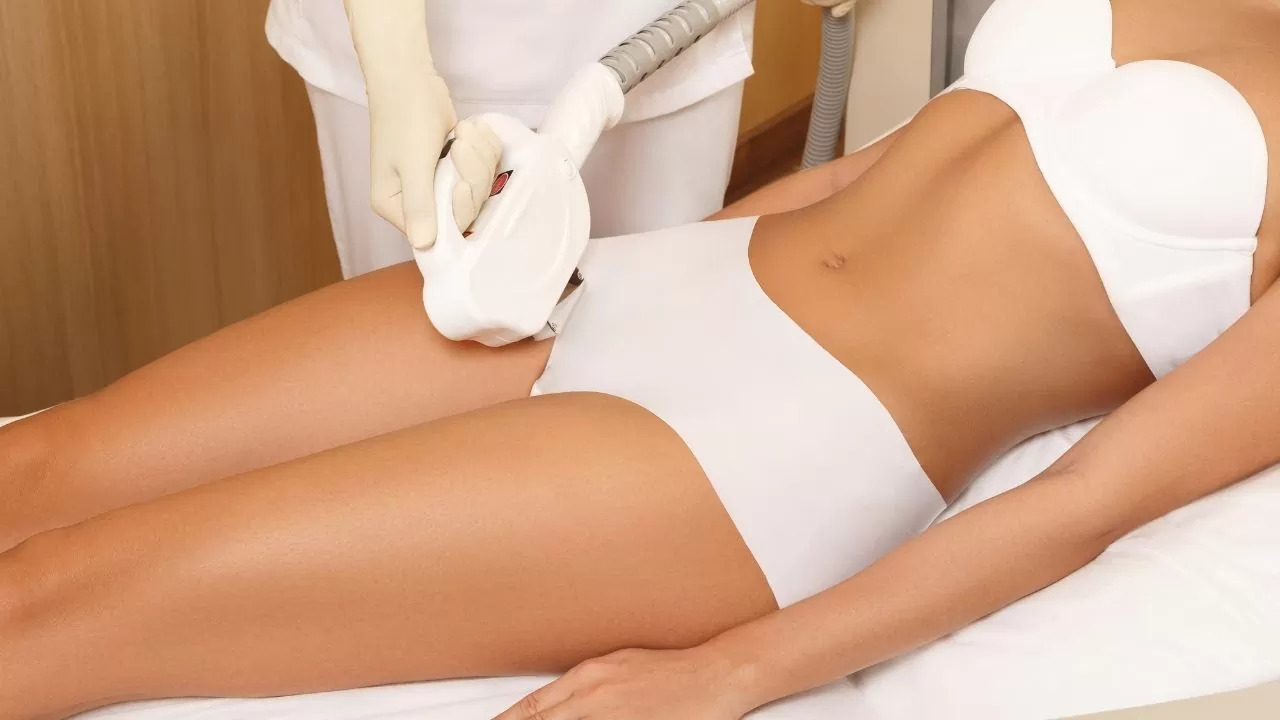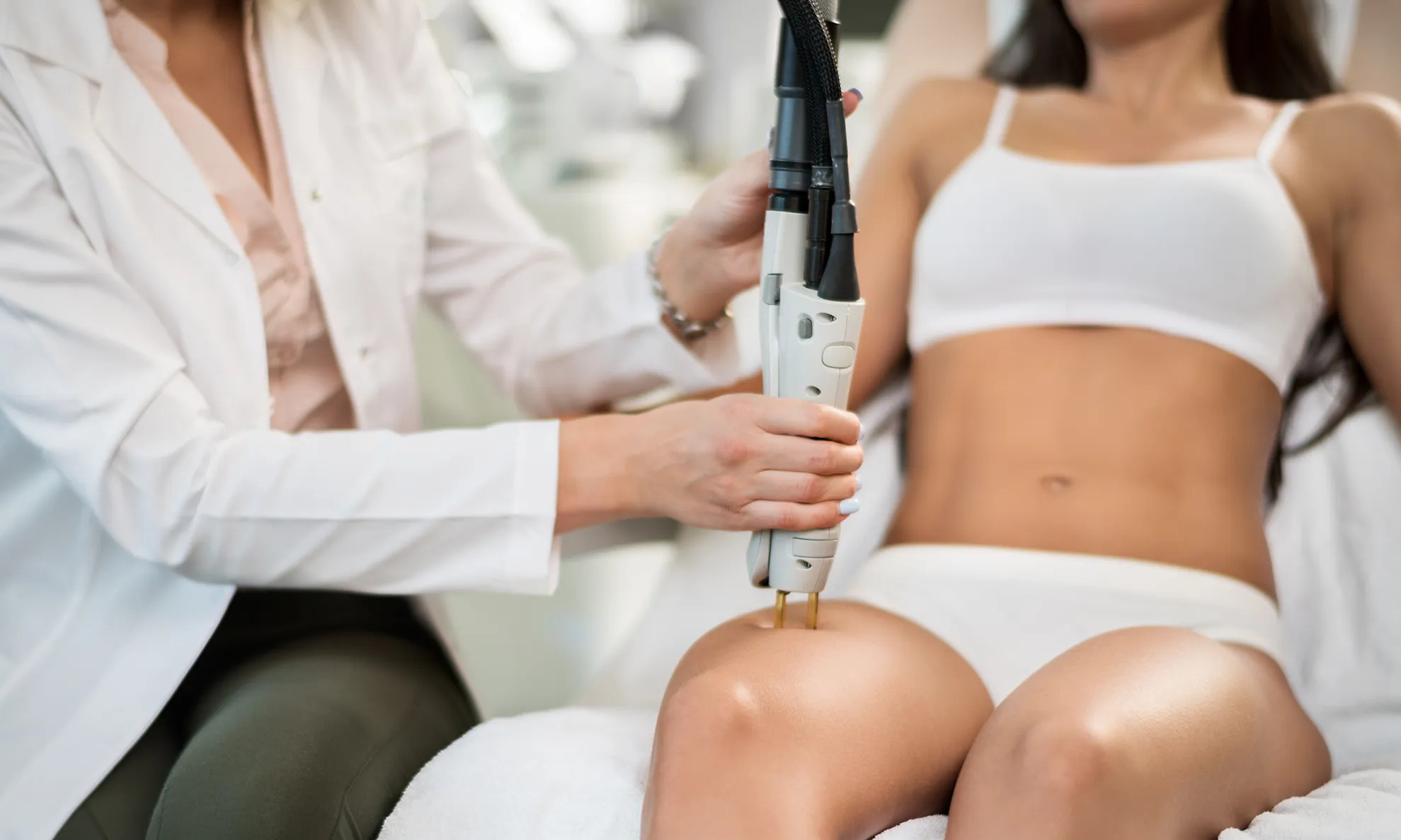

FAQs
Why Does Laser Hair Removal Hurt
Modified: August 5, 2023
Find answers to all your general questions about laser hair removal, including why it may cause some discomfort. Learn more about pain management during the procedure.
(Many of the links in this article redirect to a specific reviewed product. Your purchase of these products through affiliate links helps to generate commission for Under-tec.com, at no extra cost. Learn more)
Table of Contents
Introduction
Unwanted hair can be a hassle to deal with, and traditional methods of hair removal like shaving, waxing, or plucking can be time-consuming and sometimes uncomfortable. However, laser hair removal has become a popular solution for many people looking to achieve long-lasting hair reduction.
Laser hair removal is a cosmetic procedure that uses concentrated beams of laser light to target hair follicles and inhibit future hair growth. While the results can be remarkable, one common concern among individuals considering laser hair removal is the potential pain associated with the treatment.
In this article, we will delve into the world of laser hair removal and explore the reasons behind the discomfort that some people experience during the procedure. We will also provide tips on how to minimize pain and manage any discomfort that may arise during or after treatment.
By gaining a better understanding of the factors that contribute to pain during laser hair removal and learning how to prepare and care for your skin, you can make the process more comfortable and achieve the desired results.
Understanding Laser Hair Removal
Laser hair removal is a non-invasive cosmetic procedure that aims to remove unwanted hair on various parts of the body. It works by targeting the pigmented hair follicles beneath the skin’s surface with a concentrated beam of light. This light is absorbed by the pigment in the hair, causing damage to the follicle and inhibiting future hair growth.
The procedure is considered safe and effective for most skin types and hair colors, but it is important to consult with a medical professional or trained technician to ensure it is suitable for you.
Unlike other methods of hair removal that only provide temporary results, laser hair removal offers long-term reduction in hair growth. Multiple treatment sessions are typically recommended for optimal results, as hair follicles go through different growth phases and the laser is most effective during the active growth phase.
It is important to note that laser hair removal is not a one-size-fits-all solution. The effectiveness of the treatment can vary depending on factors such as skin type, hair thickness, hair color, and the specific laser technology being used. It is crucial to undergo a thorough consultation with a qualified professional to determine if you are a suitable candidate for the procedure and to discuss your desired outcome.
When considering laser hair removal, it is also important to have realistic expectations. While the treatment can significantly reduce hair growth, it may not completely eliminate all hair follicles. Some individuals may require occasional touch-up treatments to maintain the desired results.
Now that we have a better understanding of what laser hair removal entails, let’s explore how the procedure actually works and the factors that can contribute to the sensation of pain during treatments.
How Does Laser Hair Removal Work?
Laser hair removal works by targeting the melanin, or pigment, in the hair follicles. The laser emits a concentrated beam of light that is absorbed by the pigment in the hair. This light energy is converted into heat, which damages the follicles and inhibits future hair growth.
One of the key factors in the effectiveness of laser hair removal is the difference in pigment between the hair and the surrounding skin. The laser is designed to selectively target the darker pigment in the hair follicle while minimizing damage to the surrounding skin. This is why laser hair removal tends to be more effective on individuals with lighter skin tones and darker hair colors.
During the treatment, a handheld device is used to direct the laser energy onto the targeted area. The technician or medical professional performing the procedure will adjust the settings of the laser based on factors such as your skin type, hair color, and the thickness of the hair. This ensures that the treatment is safe and effective for your specific needs.
It is important to note that laser hair removal is not a one-time procedure. Hair grows in cycles, and the laser is most effective during the active growth phase. This means that multiple treatment sessions are typically needed to target the hair follicles at different stages of growth. The number of sessions required can vary depending on factors such as the area being treated and your individual hair growth patterns.
It is common for individuals to experience some level of discomfort during laser hair removal, as the heat generated by the laser can cause a sensation similar to a rubber band snap or a mild sunburn. However, advances in technology have led to the development of laser systems that incorporate cooling mechanisms to minimize discomfort during the procedure.
Now that we have a clear understanding of how laser hair removal works, let’s explore the factors that contribute to the sensation of pain during the treatment and how to prepare for a more comfortable experience.
Factors That Contribute to Pain during Laser Hair Removal
While laser hair removal is generally tolerable, some individuals may experience varying degrees of discomfort during the procedure. Several factors can contribute to the sensation of pain or discomfort, including:
- Individual Sensitivity: People have different pain thresholds, so what may be painful for one person might be less uncomfortable for another.
- Treatment Area: Certain areas of the body, such as the bikini line or underarms, may be more sensitive due to the higher concentration of nerve endings.
- Hair Color and Thickness: Dark, coarse hair tends to absorb more laser energy, resulting in a higher likelihood of discomfort. Conversely, lighter or finer hair may be less susceptible to the heat generated by the laser.
- Skin Sensitivity: Individuals with sensitive skin may experience more discomfort during laser hair removal. It is essential to inform your technician if you have any skin conditions or allergies before the treatment.
- Improper Technique: If the laser settings are not properly adjusted or the handheld device is not correctly applied to the skin, it can lead to increased pain or potential skin damage.
While it is impossible to completely eliminate all discomfort during laser hair removal, there are steps you can take to minimize the pain and maximize your comfort during the procedure. These include:
- Choose a reputable and experienced laser hair removal provider who uses advanced laser technology and follows proper safety protocols.
- Ensure proper communication with your technician, discussing any concerns or previous experiences that may affect your comfort.
- Consider using numbing creams or over-the-counter pain relief medications, as recommended by your technician or medical professional.
- Take care of your skin leading up to the treatment, keeping it well-moisturized and avoiding sun exposure to reduce skin sensitivity.
- Follow the technician’s instructions for proper aftercare, which may include avoiding sun exposure, using soothing creams or gels, and refraining from activities that may irritate the treated area.
By understanding the factors that contribute to pain during laser hair removal and taking the necessary precautions, you can significantly minimize any discomfort and achieve a more pleasant experience.
Preparing for Laser Hair Removal Treatment
Preparing for laser hair removal can help ensure a more comfortable and effective treatment. Here are some essential steps to take before your session:
- Consultation: Schedule a consultation with a trained technician or medical professional to assess your eligibility for laser hair removal. They will evaluate factors such as your skin type, hair color, and medical history to determine the most suitable treatment plan for you.
- Avoid Sun Exposure: Limit sun exposure and avoid tanning beds for at least two weeks before your treatment. Sunburned or tanned skin can increase the risk of complications during laser hair removal, such as skin discoloration or burning.
- Avoid Hair Removal Methods: Refrain from plucking, waxing, or using any hair removal methods that disturb the hair follicle’s root for six weeks prior to your session. These methods remove the hair follicle, which is necessary for the laser to target it effectively.
- Shave the Treatment Area: On the day of your appointment, shave the treatment area thoroughly. This ensures that the laser can directly target the hair follicle beneath the skin without interference from long hair on the surface.
- Cleanse the Skin: Before your session, cleanse the treatment area to remove any lotions, oils, or debris that may impede the laser’s effectiveness. Use a gentle cleanser and avoid applying any irritating products to the skin.
- Avoid Certain Products: Refrain from using any perfumes, deodorants, or other potential irritants on the treatment area before your session. These substances can react with the laser and cause discomfort or adverse skin reactions.
- Inform Your Technician: Inform your technician about any changes in your medication, medical conditions, or skin ailments since your consultation. This information helps them determine if any adjustments or precautions are necessary.
Following these guidelines will help ensure that your skin is prepared for laser hair removal and enhance the effectiveness of the treatment. It is important to note that each individual may have unique requirements, so it is crucial to follow the specific instructions provided by your technician or medical professional.
Minimizing Pain during Laser Hair Removal
While some level of discomfort is to be expected during laser hair removal, there are several strategies you can employ to minimize pain and enhance your overall treatment experience:
- Topical Numbing Creams: Consider using topical numbing creams or gels containing lidocaine or other numbing agents. Apply them to the treatment area 30-60 minutes before your session, following the instructions provided by your technician.
- Cooling Treatments: Some laser devices incorporate built-in cooling mechanisms to help minimize pain. If your provider offers this option, discuss it with them beforehand to ensure its use during your treatment.
- Breathing and Relaxation Techniques: Practice deep breathing or relaxation exercises during your session to help alleviate anxiety and distract from any discomfort you may experience.
- Communicate with Your Technician: Maintain open communication with your technician throughout the procedure. Inform them immediately if you experience excessive pain or discomfort so that they can adjust the laser settings or take any necessary steps to maximize your comfort.
- Take Breaks if Needed: If the pain becomes too intense, ask your technician for short breaks during the treatment. This can help alleviate discomfort and give you a chance to regroup before continuing.
- Wear Comfortable Clothing: Opt for loose-fitting and breathable clothing on the day of your treatment. This helps prevent unnecessary irritation or friction on the treated area, reducing discomfort after the session.
- Use Cold Compresses: After your treatment, you may experience mild redness or swelling. Applying cold compresses or ice packs to the treated area can help soothe any discomfort or inflammation.
It is important to remember that pain tolerance varies from person to person, and what may be uncomfortable for one individual might be relatively painless for another. Additionally, advancements in laser technology have led to the development of systems that minimize discomfort during the procedure.
By following these strategies and collaborating with your technician, you can significantly reduce pain and discomfort during laser hair removal, making the treatment experience more bearable and effective.
Post-treatment Care and Pain Management
After your laser hair removal treatment, it is essential to follow proper post-treatment care guidelines to manage any discomfort and optimize the healing process. Here are some tips to help you take care of your skin and minimize pain:
- Avoid Sun Exposure: Protect the treated area from direct sunlight and UV exposure for at least a week after your session. Apply a broad-spectrum sunscreen with a high SPF to shield your skin from harmful rays.
- Avoid Hot Showers and Baths: Avoid hot water, saunas, steam rooms, and hot baths for 24-48 hours following your treatment. Hot environments can irritate the skin and exacerbate any discomfort you may be experiencing.
- Moisturize Regularly: Keep the treated area moisturized using a gentle, fragrance-free moisturizer. Moisturizing helps soothe the skin and reduce dryness or flakiness that may occur after the treatment.
- Avoid Irritating Products: Refrain from using harsh cleansers, exfoliants, or products that contain potential irritants, such as alcohol or fragrance, on the treated area. Stick to mild, non-irritating products and follow the specific aftercare instructions provided by your technician.
- Avoid Touching or Scratching: It is important to resist the urge to touch, pick, or scratch the treated area. Doing so can lead to infection, skin damage, or scarring.
- Manage Discomfort with Cold Compresses: If you experience any discomfort or swelling after the treatment, apply cold compresses or ice packs wrapped in a cloth to the area. This can help reduce inflammation and provide temporary relief.
- Follow-up Appointments and Maintenance: Keep up with the recommended treatment schedule based on your technician’s guidance. Multiple sessions are typically required for optimal results, and regular maintenance treatments may be necessary to maintain your desired outcome.
If you have concerns about pain or experience any unusual side effects, do not hesitate to reach out to your technician or medical professional for guidance and support. They can provide additional recommendations or reassurance based on your specific situation.
By following these post-treatment care guidelines, you can help manage any discomfort and promote the healing process, ensuring the best possible results from your laser hair removal treatments.
Conclusion
Laser hair removal offers a reliable and long-lasting solution for getting rid of unwanted hair. While some individuals may experience discomfort during the procedure, understanding the factors that contribute to pain and taking appropriate steps can significantly minimize any discomfort.
By preparing for your laser hair removal treatment and following proper pre- and post-treatment care guidelines, you can optimize your comfort and enhance the effectiveness of the procedure. Consulting with a trained technician or medical professional, using numbing creams or gels, and practicing relaxation techniques can all help reduce pain during the treatment.
After the session, it is crucial to take care of your skin by avoiding sun exposure, applying moisturizer, and following instructed aftercare guidelines. This will help manage any discomfort, promote healing, and achieve the desired results from the treatment.
Remember, pain tolerance varies from person to person, and advancements in laser technology have made the procedure more comfortable than ever before. Open communication with your technician and addressing any concerns or questions you may have will ensure that your experience is as positive and pain-free as possible.
Keep in mind that laser hair removal is a gradual process that requires multiple sessions for optimal results. By remaining consistent with your treatments and following the recommended maintenance plan, you can enjoy long-term hair reduction and smoother skin.
Ultimately, laser hair removal can be a transformative solution, freeing you from the hassle and discomfort of traditional hair removal methods. With proper preparation, care, and pain management strategies, laser hair removal can make your journey towards smooth, hair-free skin a more comfortable and rewarding experience.


